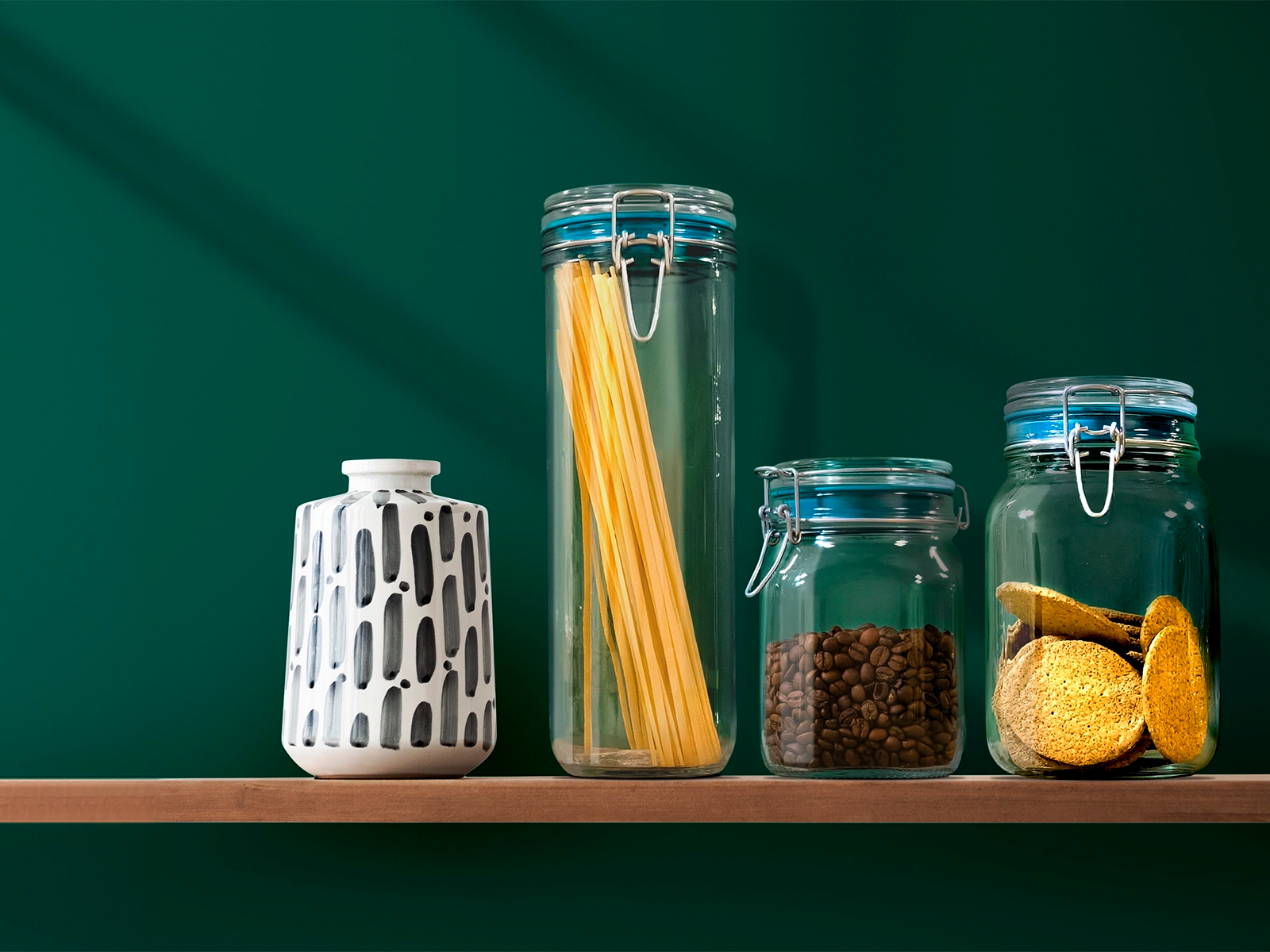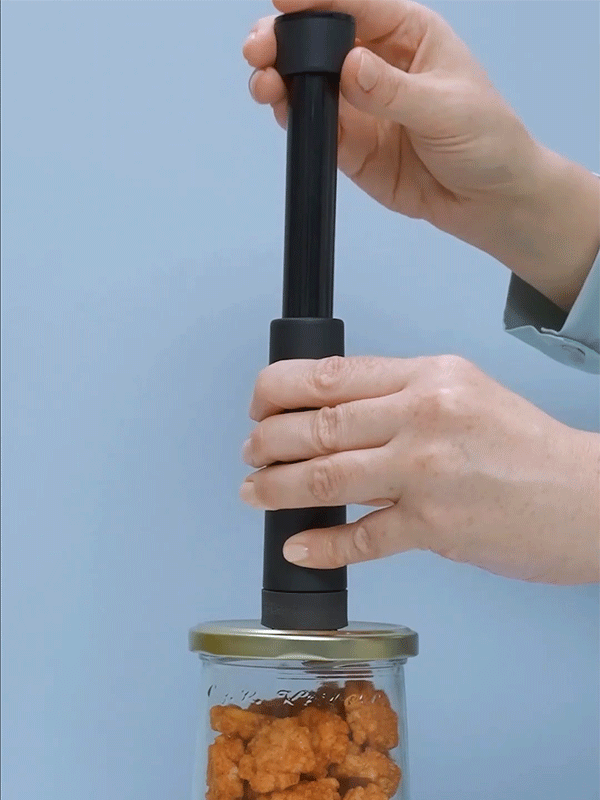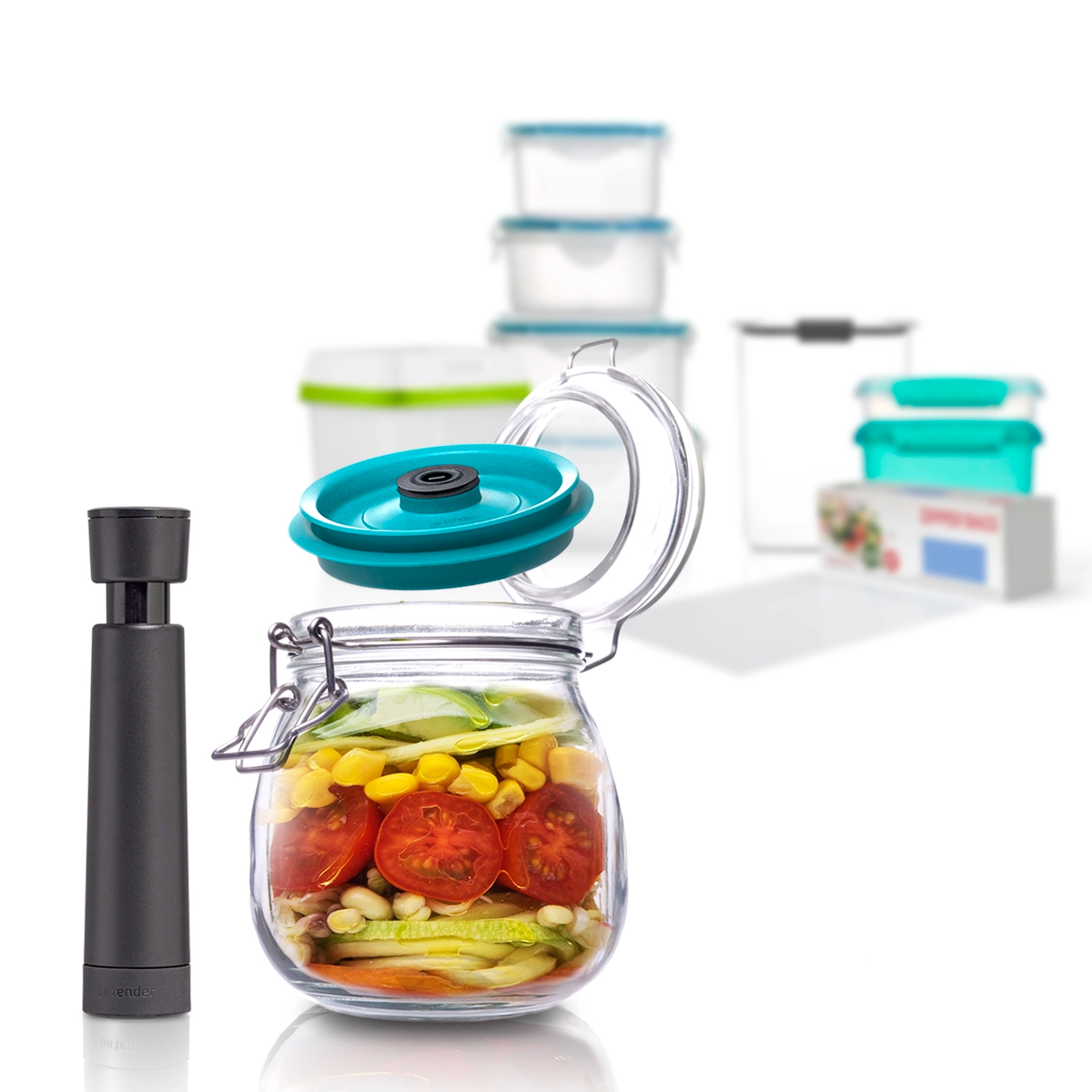
Keep food fresh longer
Taste more and waste less, by storing your food the right way. Exposure to air quickly ages food. So always avoid air to retain freshness and nutrients. Airtight is good but vacuum is best!

Why store food with vacuum?
Our storage for the post-plastic generation
Clip-top jars, twist-top jars, glass top jars: with Airtender you can safely use and re-use them all to vacuum seal food, while doing what's best for future generations.

Why Airtender food storage is the best choice for all
Foods to vacuum save
You can practically keep anything fresh longer with vacuum. Here are a few examples of what Airtender fans use our products for.

Herbs & Spices

Fresh Granola

Loose Tea Leaves

Fresh Coffee Beans

Nuts & Seed Mix

Fresh Fruit Salad
Asked Questions
More questions? Visit our FAQ page
Why can I store food longer with vacuum?
Why can I store food longer with vacuum?
Food loses quality when it’s exposed to air. It’s the reason that, for example, cookies and cereals lose their crispiness. That process is called “oxidation”. So, by removing the air from a jar, you slow down oxidation and your food stays fresh and full of flavour and nutrients.
The second reason that food spoils is bacteria. For example, when strawberries and blueberries get soft and moldy. Most bacteria need oxygen to work. So, remove the air and, again, you will slow down loss of quality.
Although air is the most important factor, there are more factors that contribute to spoilage, such as temperature and sunlight. And, of course, the condition of the food before storage and hygiene when handling and preparing food.
Does vacuum storage work for all foods?
Does vacuum storage work for all foods?
Vacuum storage will extend shelf life for most types of food. That doesn't only apply to dry foods like cookies, nuts and cereals. Vacuum also works for fresh foods such as fruit salads and fresh strawberries, blueberries and even guacamole.
As a rule of thumb, vacuum will keep food fresh up to 5x longer, when compared to conventional storage. An example: when you buy strawberries, they usually start to lose their qiuality after about two days. Stored in a vacuum container (in the fridge!) you will extend freshness up to 1.5 weeks.
Please note that there are more factors that contribute to food aging and spoliage, inclusing temperatire and the condition of the food before storage. Maintain good hygiene and always adhere to safe food handling guidelines.
Some foods are not suitable for vacuum storage. For more information, please read our compact food storage guide.
How many times can I reuse a glass jar?
How many times can I reuse a glass jar?
Glass jars can be used indefinitely, as long as they aren't damaged. Since the Nanostoppers and Airtender lids are also reusable, you can keep vacuum savin, marinating, pickling and more, as lang as you want!
One thing to keep in mind is that metal lids may not last forever. Since the standard metal lids have not been manufactured for endless use, the built-in seal might start to lose it's airtight function. Luckily, you can use any twist-top jar, so either replace the entire jar, just the lid or select a reusable Airtender jar and you're good to go. Just don't forget to recycle any jars and lids that you don't need anymore :)
Why is glass better than plastic?
Why is glass better than plastic?
When you save food in plastic containers and bags, there is always a risk of chemicals slowly leaching into your food. Especially when those containers are routinely washed in the dishwasher. Yes, the materials may have been labelled as ‘food approved’, but the effects over time when directly in contact with food are still uncertain.
Apart from the chemical problem, there is evidence that tiny pieces of plastic called “microplastics” and “nanoplastics” separate from containers and lids into your food. These plastic particles end up in the body, which poses severe health risks.
Glass, however, does not leach chemicals and does not disintegrate into your food. It has been a safe and trusted way of storing and preparing foods for centuries. And of course: 100% recyclable and sustainable!










